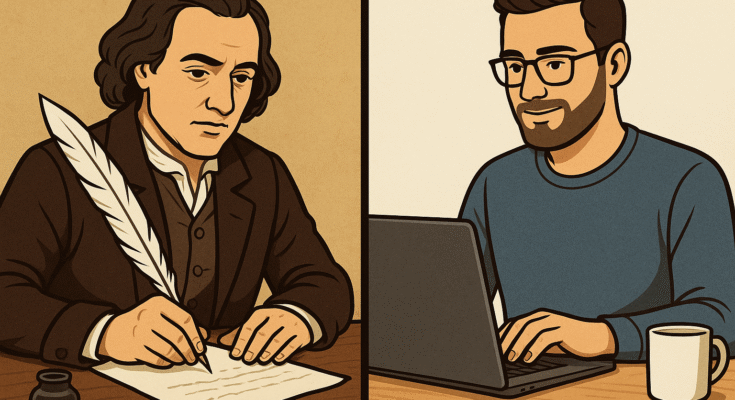The Art of Essay Writing: From Idea to the Written Word
Essay writing is one of humanity’s oldest and most powerful forms of expression—a craft that blends creativity with structure. Whether crafted for journalism, literature, marketing, or education, an essay is more than just words on a page. It’s a deliberate process designed to communicate ideas, inform, persuade, or spark emotion. Let’s explore the essence of essays, their many forms, and how to master this timeless skill.
What Is an Essay?
An essay is a short to medium-length prose piece focused on discussing a specific topic from the writer’s perspective. It can be informative, analytical, persuasive, or critical, often written in a clear, organized style. Essays invite readers into a conversation, offering insights that educate, challenge, or inspire.
Types of Essays: A Spectrum of Styles
- Informative Essay:
- Purpose: To present accurate, factual information.
- Style: Objective, neutral, and research-driven.
- Example: An article explaining climate change or the benefits of reading.
- Analytical Essay:
- Purpose: To dissect a topic or issue from multiple angles.
- Style: Logical, detailed, and evidence-based.
- Example: Analyzing youth unemployment in the Arab world or social media’s societal impact.
- Opinion Essay:
- Purpose: To argue the writer’s viewpoint.
- Style: Personal and persuasive, backed by examples.
- Example: “Why I Oppose Remote Learning” or “My Take on Women’s Right to Drive.”
- Critical Essay:
- Purpose: To evaluate a work of art, literature, or social issue.
- Style: Balanced, highlighting strengths and weaknesses.
- Example: A critique of a novel, film, or cultural trend.
- Creative/Literary Essay:
- Purpose: To convey ideas or emotions through artistic language.
- Style: Rich in imagery, metaphor, and sensory detail.
- Example: “Conversations with Sunset” or “When the Wind Speaks.”
- Expository Essay:
- Purpose: To explain a concept or process.
- Style: Clear, straightforward, and example-driven.
- Example: Breaking down emotional intelligence or how the internet works.
- Journalistic Essay:
- Purpose: To report on current events.
- Style: Concise, answering who, what, when, where, why.
- Example: Coverage of election results or a natural disaster.
- Promotional/Marketing Essay:
- Purpose: To persuade readers about a product or service.
- Style: Persuasive, blending facts with benefits.
- Example: Highlighting a health product’s advantages or promoting a new app.
How to Write an Essay: A Step-by-Step Guide
- Choose Your Topic: Pick something you’re passionate or knowledgeable about.
- Research: Gather credible sources—facts, quotes, and data.
- Outline: Map your main idea, supporting points, and structure.
- Introduction: Hook readers with a compelling opener and thesis statement.
- Body: Develop arguments with examples, evidence, and analysis.
- Conclusion: Summarize key points and leave readers with a final thought or call to action.
- Revise: Polish grammar, tighten sentences, and ensure clarity.
Traits of a Great Essay
- Clarity: Ideas are easy to follow.
- Logical Flow: Arguments build coherently.
- Engaging Language: Tone matches the audience and purpose.
- Strong Voice: A clear perspective or message shines through.
Why Essays Matter
Essays shape opinions, share knowledge, and drive change. They hone critical thinking, research skills, and creativity. In today’s digital age, essays thrive in blogs, social media, and online education, proving their timeless relevance.


